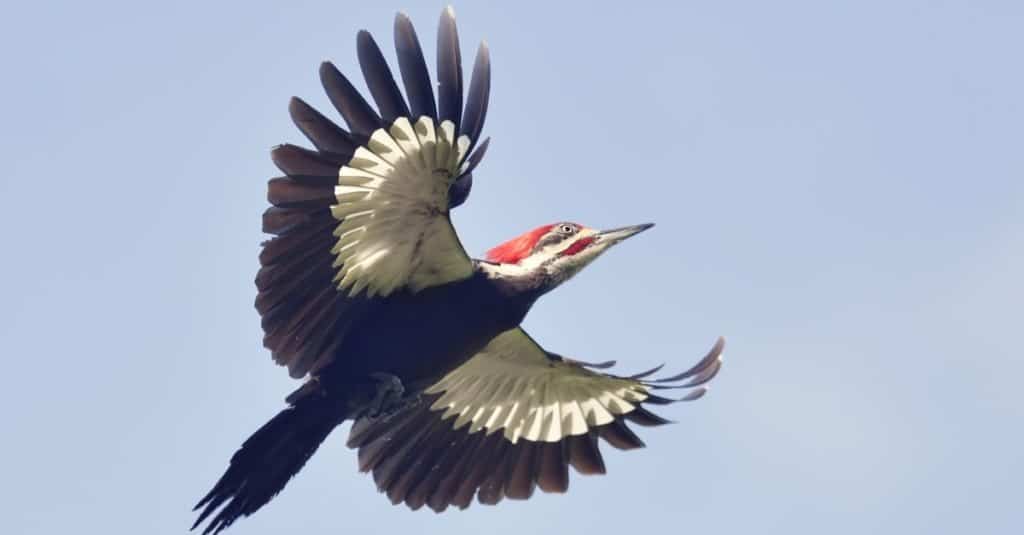Florida is home to many animals, including the gorgeous Pileated woodpecker. Open pine forests with massive, older trees that are widely spaced are where you can find the Pileated Woodpecker. They use their bill to beat on trees to mark their territory.
Check Out the Video Here
They are widespread in Canada, western Washington, northern California, and the majority of the eastern United States. One thing that makes this woodpecker stand out from others is its size.
The biggest woodpecker in North America is called a red-capped pileated woodpecker. This bird is not a little downy woodpecker, so you won’t be misled. This bird, which is 16 to 19 inches in length, is the biggest in the United States. Their wingspan is 29 inches long. Although it was bigger, the ivory-billed woodpecker is now thought to be extinct.

Pileated woodpecker in flight.
©Svetlana Foote/Shutterstock.com
They favor extensive areas of mixed woodlands and mature forests, both deciduous and coniferous. You can attract pileated woodpeckers to your yard. They could use vacant nest boxes as well as dead or dying trees on a domain to roost or build their nests. Thankfully, after years of decline, this species’ population is now increasing!
Tall and elegant, pileated woodpeckers may be simpler to draw than you think. The pileated woodpecker, which may grow as large as a crow, enjoys flaunting its size. Its name, pileatus, which translates from Latin as “crowned,” alludes to the bird’s prominent crest.
Unique Eating Habits
Carpenter ants dominate their diet, along with other insects, berries from the wild, and acorns. When encircled by tree stumps and fallen timber, pileated woodpeckers flourish in wooded areas. In order to find termites, carpenter ants, wood-boring beetle larvae, and other pests, they are renowned for drilling big rectangular holes through solid branches and tree trunks.
They have lengthy, thorny tongues made specifically for snatching insects from trees. After being dug, the holes provide owls, peregrines, ducks, bats, and pine martens with shelter. The majority of the time, pileated woodpeckers avoid human contact and are cautious and enigmatic.
They rarely frequent bird feeders. These majestic birds are gradually growing less wary of humans, getting easier to spot, and becoming more habituated to human presence in regions where they are more numerous. Some people have even learned about the advantages of bird feeders, but this is still a rare occurrence.
It is common to see two pileated woodpeckers together because mated pairs frequently remain together in their region throughout the year. But seeing three people together is considerably more unusual.
Juvenile pileated woodpeckers that emerged during the breeding season could still be interacting with their parents in the late summer or early autumn. Adults may be less territorial during the winter, which results in them occasionally allowing intruders to stay.
The photo featured at the top of this post is © JoshCW Photo/Shutterstock.com
Thank you for reading! Have some feedback for us? Contact the AZ Animals editorial team.






